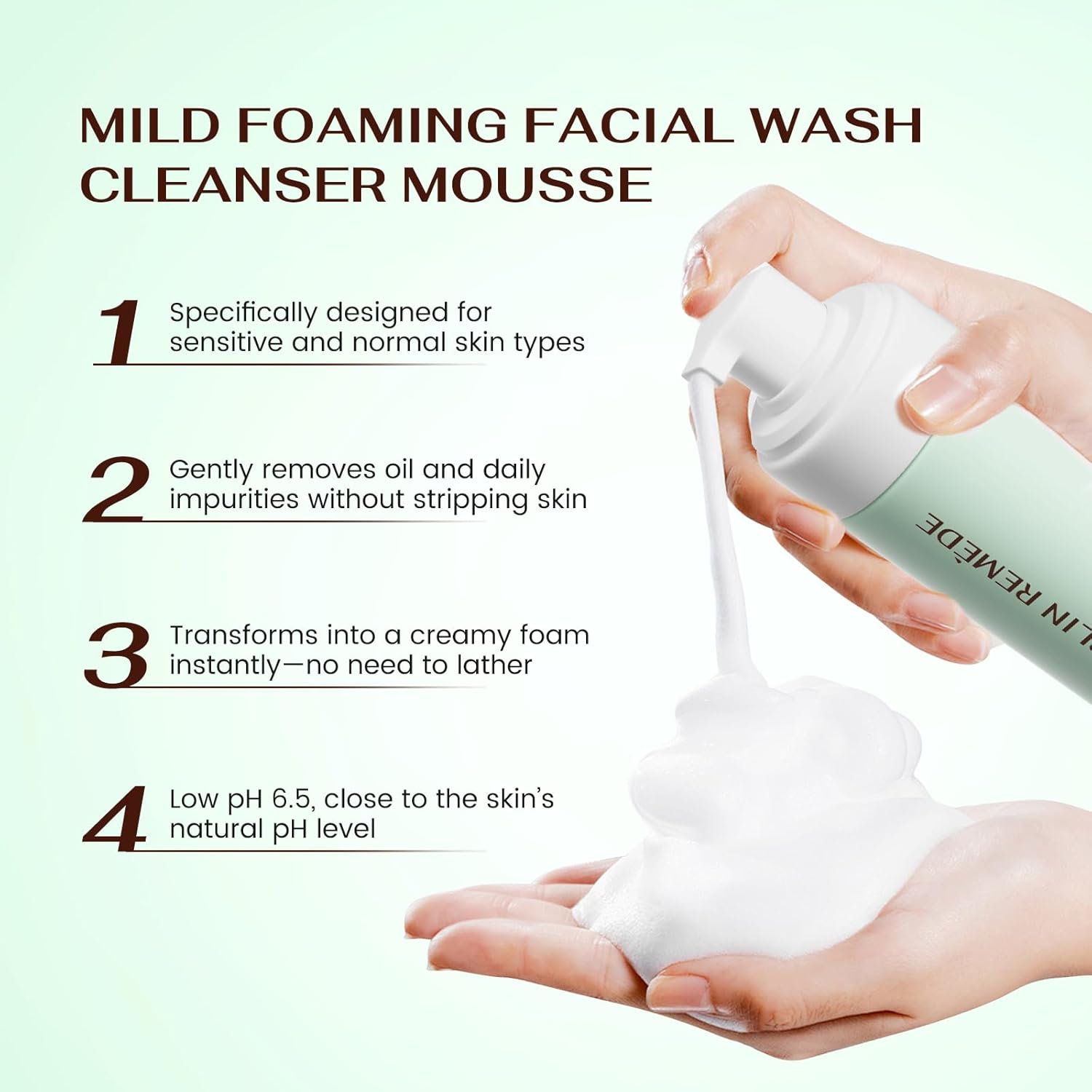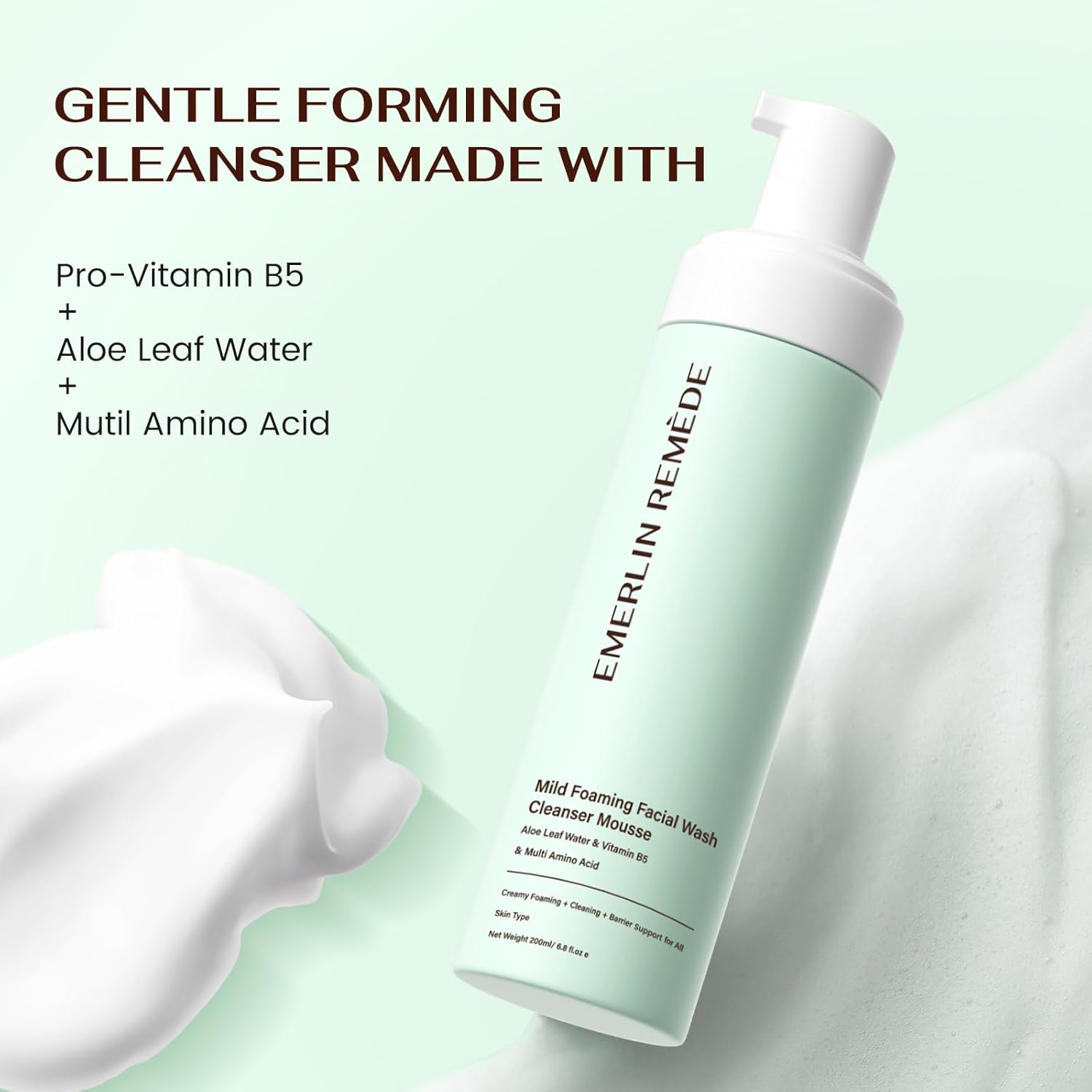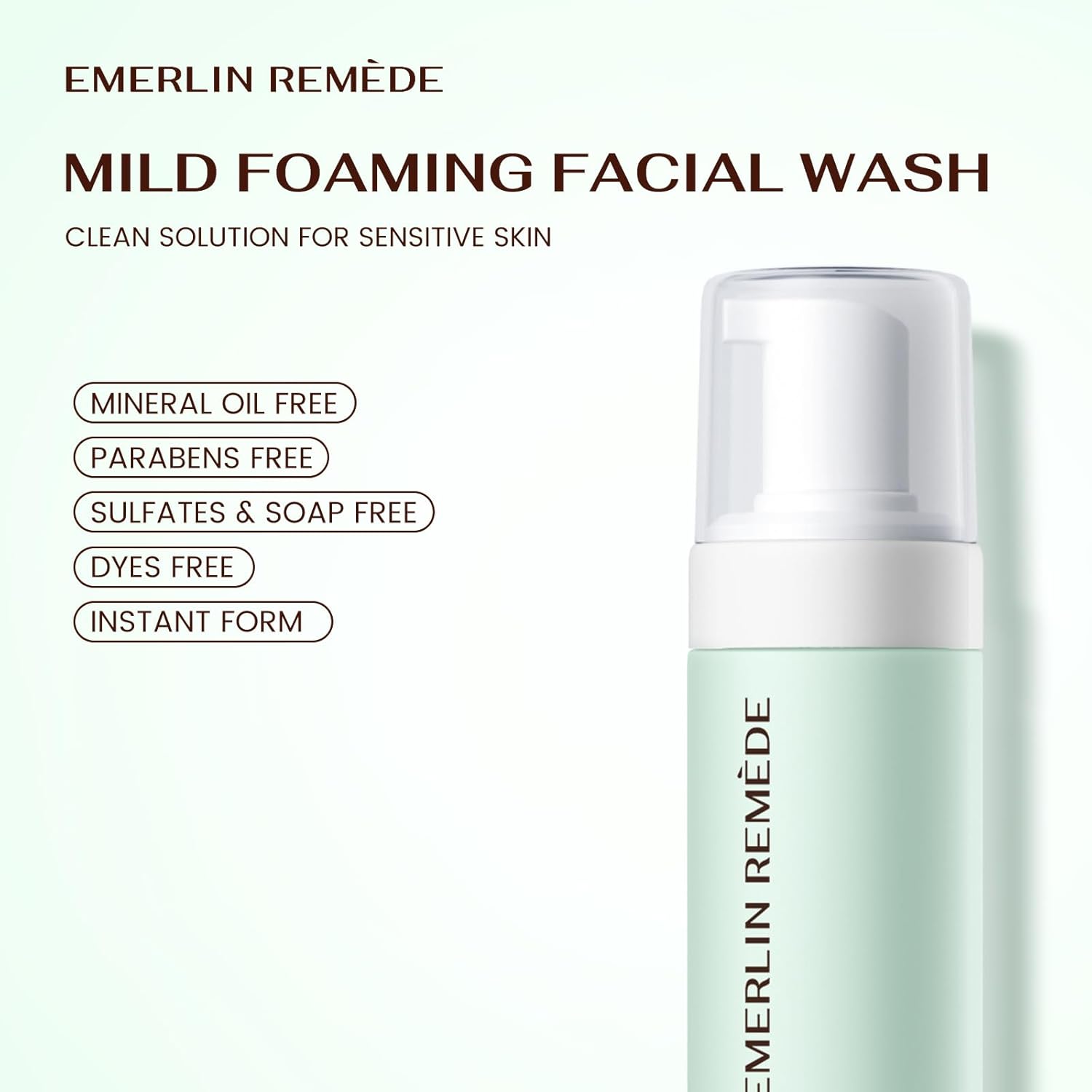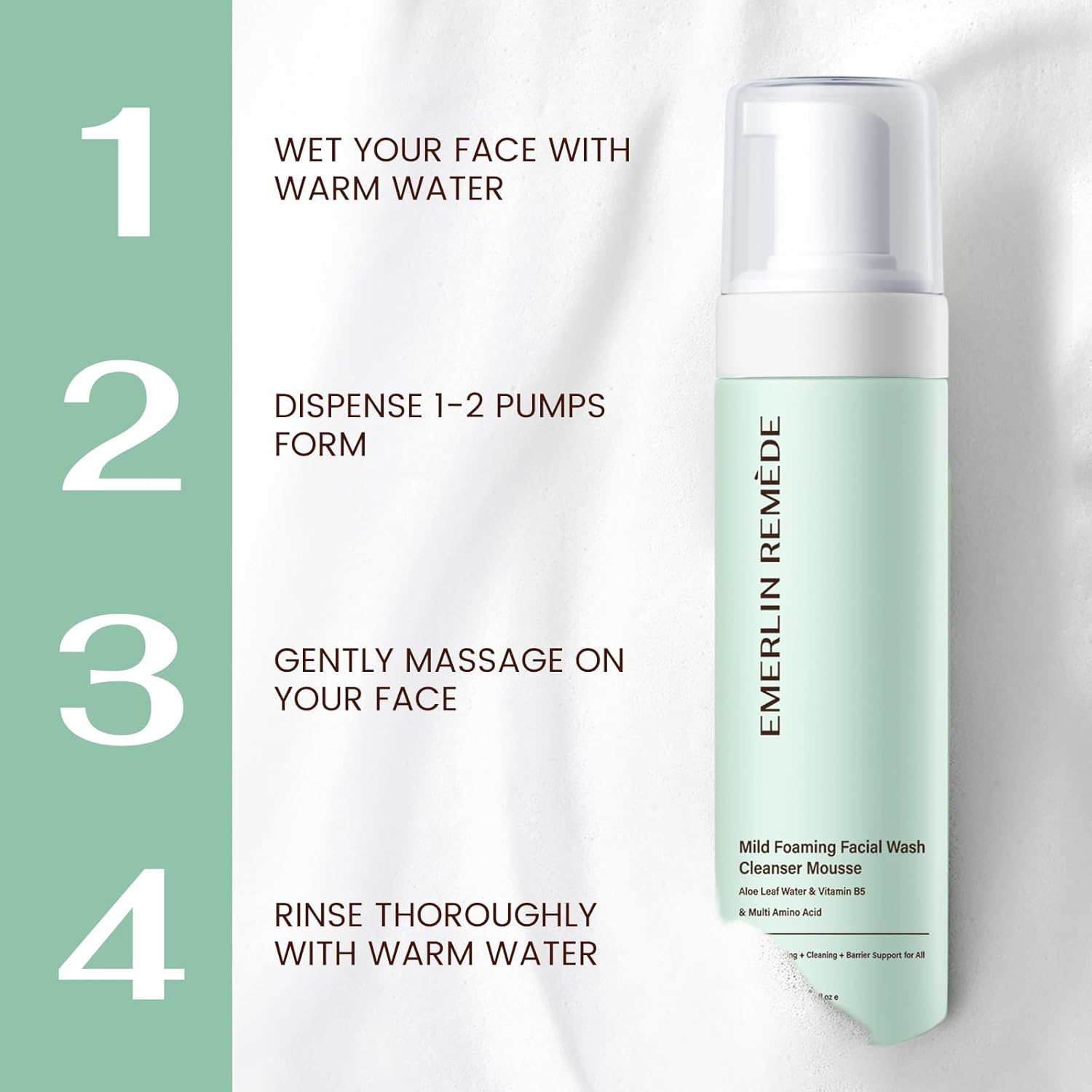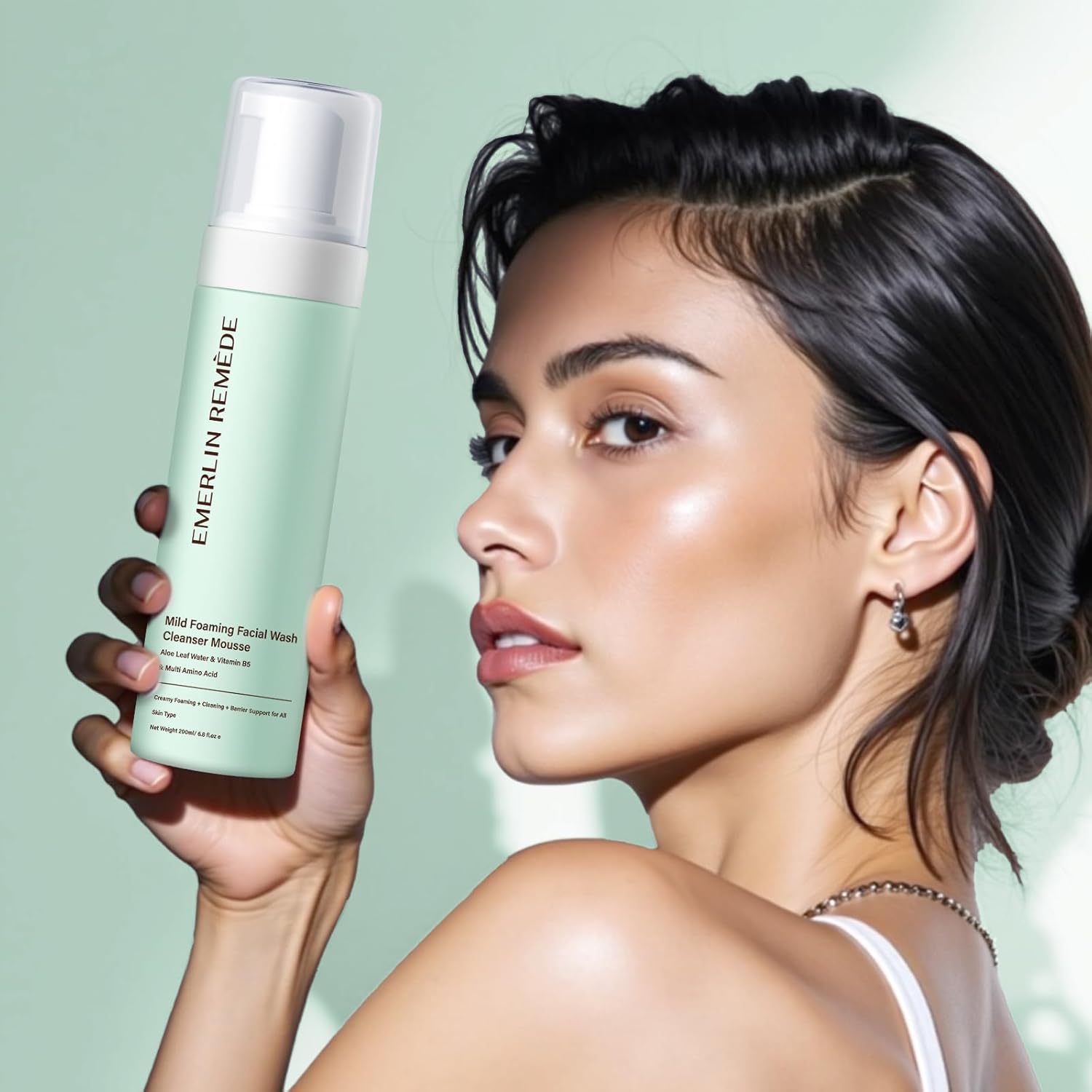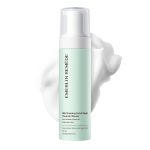
Mild Foaming Facial Wash Cleanser Mousse Review facial cleanser Buying Guide – Oemiu
Mild Foaming Facial Wash Cleanser Mousse: A Comprehensive Review and Buying Guide
In the quest for radiant and healthy skin, the journey often begins with finding the right facial cleanser. With countless options lining the shelves, navigating the world of skincare can feel overwhelming. This article delves deep into the realm of mild foaming facial wash cleanser mousse, providing an in-depth review and comprehensive buying guide to help you make an informed decision. We’ll explore the nuances of these gentle cleansers, their benefits, potential drawbacks, and how to choose the perfect one for your specific skin type and concerns. Forget harsh scrubs and stripping washes; we’re focusing on the soothing power of a good mousse!
Understanding Mild Foaming Cleansers: A Gentle Approach to Skincare
The beauty market is flooded with cleansers claiming to deliver miraculous results. However, many of these contain harsh chemicals that can strip the skin of its natural oils, leading to dryness, irritation, and even breakouts. This is where mild foaming cleansers come into play. They offer a gentler alternative, effectively removing dirt, oil, and makeup without compromising the skin’s delicate barrier. The “foaming” action, often achieved through carefully selected surfactants, allows for a thorough cleanse without the need for aggressive scrubbing. This makes them particularly suitable for those with sensitive, dry, or easily irritated skin. Unlike some harsher facial cleansers that leave the skin feeling tight and uncomfortable, a good mild foaming cleanser should leave your face feeling clean, refreshed, and hydrated. The mousse texture adds another layer of gentleness, providing a cushiony feel that minimizes friction during application. Think of it like washing your face with a cloud – a delicate yet effective way to purify your skin. Choosing the right one also depends on additional ingredients present. Look for formulations with hydrating ingredients like hyaluronic acid, glycerin, or aloe vera to further enhance the moisturizing benefits and avoid any unnecessary dryness. Avoid harsh sulfates such as Sodium Lauryl Sulfate. Consider those with skin-soothing ingredients like chamomile or green tea extract to calm irritation and reduce redness. Ultimately, the goal is to find a facial cleanser that effectively cleanses without disrupting the natural balance of your skin.
The Science Behind the Suds: How Foaming Cleansers Work
Foaming cleansers rely on surfactants to lift away impurities. Surfactants are molecules that have both water-loving (hydrophilic) and oil-loving (lipophilic) properties. This dual nature allows them to attract both water and oil-based dirt, effectively emulsifying them so they can be easily rinsed away. In mild foaming cleansers, these surfactants are carefully chosen to be gentle and non-irritating. The foaming action helps to distribute the cleanser evenly across the skin, ensuring thorough coverage and efficient removal of debris. The mousse texture, achieved through the addition of air or specific ingredients, creates a luxurious and lightweight feel that enhances the cleansing experience. It also minimizes the amount of friction applied to the skin, making it a great option for those with sensitive or reactive skin. The key difference between a harsh cleanser and a mild foaming cleanser lies in the type and concentration of surfactants used. Harsh cleansers often contain high concentrations of aggressive surfactants that strip away the skin’s natural oils, leading to dryness and irritation. Mild foaming cleansers, on the other hand, use gentler surfactants in lower concentrations, effectively cleansing the skin without compromising its barrier function. Furthermore, the pH level of the cleanser plays a crucial role. The skin’s natural pH is slightly acidic (around 5.5), and using a cleanser with a pH that is too high or too low can disrupt this balance, leading to irritation and sensitivity. Look for foaming cleansers that are pH-balanced to ensure they are gentle and compatible with your skin. This pH-balanced daily face wash helps to maintain the skin’s natural protective barrier, preventing moisture loss and promoting a healthy, balanced complexion.
Choosing the Right Mild Foaming Cleanser: A Buyer’s Guide
Selecting the perfect mild foaming cleanser requires careful consideration of your skin type, concerns, and ingredient preferences. Not all cleansers are created equal, and what works wonders for one person may not be suitable for another. Before diving into specific product recommendations, let’s explore the key factors to keep in mind when making your purchase. Consider your skin type. If you have dry skin, look for cleansers with hydrating ingredients like hyaluronic acid, glycerin, or ceramides. If you have oily skin, opt for cleansers that are oil-free and non-comedogenic. If you have sensitive skin, avoid cleansers with fragrances, dyes, and harsh chemicals. Addressing specific skin concerns is also important. If you struggle with acne, consider cleansers with salicylic acid or benzoyl peroxide. If you’re concerned about aging, look for cleansers with antioxidants like vitamin C or green tea extract. Finally, remember to consider your ingredient preferences. If you prefer natural or organic products, look for cleansers that are free of synthetic ingredients. Always do a patch test on a small area of your skin before using a new cleanser on your entire face to ensure you don’t have any adverse reactions. Reading online reviews and seeking recommendations from friends or dermatologists can also be helpful in narrowing down your options. Remember, the goal is to find a cleanser that effectively cleanses your skin without causing irritation or dryness. Finding the right everyday facial cleanser can be an important part of your skincare routine. Always choose a formulation that aligns with your skin’s unique needs.
Comparing Popular Mild Foaming Cleansers: Features and Benefits
To illustrate the differences between various mild foaming cleansers, let’s compare a few popular options based on key features and benefits. The following table provides a side-by-side comparison of three hypothetical cleansers, highlighting their key ingredients, suitability for different skin types, and potential benefits. This will provide you with a framework for evaluating other cleansers and making an informed decision based on your individual needs. Note that these are hypothetical and you should research actual products on the market to make a purchase decision.
| Feature | Cleanser A | Cleanser B | Cleanser C |
|---|---|---|---|
| Key Ingredients | Hyaluronic Acid, Green Tea Extract, Ceramides | Salicylic Acid, Tea Tree Oil, Aloe Vera | Vitamin C, Rosehip Oil, Chamomile |
| Skin Type Suitability | Dry, Sensitive, Mature | Oily, Acne-Prone, Combination | Normal, Dull, Sensitive |
| Potential Benefits | Hydration, Anti-Aging, Soothing | Acne Treatment, Oil Control, Calming | Brightening, Antioxidant Protection, Calming |
| Fragrance | Fragrance-Free | Mild Tea Tree Scent | Light Rose Scent |
| Price (Approximate) | $25 | $20 | $30 |
As you can see, each cleanser offers a unique blend of ingredients and benefits tailored to different skin types and concerns. Cleanser A, with its hydrating and anti-aging properties, is ideal for dry, sensitive, or mature skin. Cleanser B, formulated with salicylic acid and tea tree oil, is best suited for oily, acne-prone, or combination skin. Cleanser C, rich in vitamin C and rosehip oil, is designed to brighten dull skin and provide antioxidant protection, making it a good choice for normal or sensitive skin. The presence or absence of fragrance is another important consideration, particularly for those with sensitive skin. Always read the ingredient list carefully and choose a cleanser that aligns with your specific needs and preferences. Remember, the most effective cleanser is one that you enjoy using and that delivers visible results without causing irritation.
Mild Foaming Cleanser Mousse Review: A Deep Dive into Texture and Efficacy
The mousse texture of some mild foaming cleansers offers a unique advantage over traditional liquid or gel cleansers. The airy, lightweight consistency glides effortlessly across the skin, providing a gentle and luxurious cleansing experience. This is particularly beneficial for those with sensitive or delicate skin, as the mousse minimizes friction and reduces the risk of irritation. But beyond the textural appeal, how effective are these mousse cleansers in removing dirt, oil, and makeup? The answer lies in the formulation. A well-formulated mild foaming cleanser mousse will contain gentle yet effective surfactants that lift away impurities without stripping the skin’s natural oils. It will also be pH-balanced to maintain the skin’s delicate barrier function. Furthermore, the mousse texture allows for even distribution of the cleanser across the skin, ensuring thorough coverage and efficient removal of debris. Look for mousse cleansers that are specifically designed for your skin type and concerns. If you have dry skin, opt for a mousse cleanser with hydrating ingredients like hyaluronic acid or glycerin. If you have oily skin, choose a mousse cleanser that is oil-free and non-comedogenic. If you have sensitive skin, avoid mousse cleansers with fragrances, dyes, and harsh chemicals. Always read the ingredient list carefully and choose a mousse cleanser that aligns with your specific needs and preferences. When evaluating a mild foaming facial cleanser, consider the following factors:
- Effectiveness: Does it effectively remove dirt, oil, and makeup without stripping the skin?
- Gentleness: Is it gentle and non-irritating, even for sensitive skin?
- Texture: Does the mousse texture feel luxurious and comfortable on the skin?
- Ingredients: Does it contain beneficial ingredients for your skin type and concerns?
- pH Balance: Is it pH-balanced to maintain the skin’s natural barrier function?
By considering these factors, you can choose a mild foaming cleanser mousse that not only cleanses your skin effectively but also provides a luxurious and enjoyable experience.
Beyond Cleansing: Optimizing Your Skincare Routine
While choosing the right facial cleanser is a crucial step, it’s just one piece of the puzzle when it comes to achieving healthy and radiant skin. A comprehensive skincare routine should also include other essential steps, such as toning, moisturizing, and sun protection. After cleansing, applying a toner can help to balance the skin’s pH and prepare it for subsequent treatments. Toners can also provide additional benefits, such as hydration, exfoliation, or pore-refining. Next, moisturizing is essential for maintaining the skin’s hydration levels and preventing dryness. Choose a moisturizer that is appropriate for your skin type and concerns. For dry skin, opt for a rich, emollient moisturizer. For oily skin, choose a lightweight, oil-free moisturizer. For sensitive skin, choose a moisturizer that is free of fragrances, dyes, and harsh chemicals. Finally, sun protection is crucial for preventing sun damage and premature aging. Apply a broad-spectrum sunscreen with an SPF of 30 or higher every day, even on cloudy days. In addition to these essential steps, you may also consider incorporating other treatments into your skincare routine, such as serums, masks, or exfoliants. Serums are concentrated treatments that target specific skin concerns, such as wrinkles, hyperpigmentation, or acne. Masks can provide a boost of hydration, exfoliation, or nourishment. Exfoliants help to remove dead skin cells, revealing smoother and brighter skin. When incorporating new products into your routine, introduce them gradually to avoid irritating your skin. Pay attention to how your skin reacts and adjust your routine accordingly. Consistency is key when it comes to skincare. Sticking to a consistent routine will help you to achieve the best possible results. Remember that a consistent and tailored approach is much more effective than randomly trying new things. By combining the right facial cleanser with a comprehensive skincare routine, you can achieve healthy, radiant, and youthful-looking skin.
Troubleshooting Common Cleansing Concerns
Even with the best cleanser and skincare routine, you may still encounter occasional issues. Understanding how to troubleshoot common cleansing concerns can help you maintain a healthy and balanced complexion. One common concern is dryness after cleansing. This can be caused by using a cleanser that is too harsh or by over-cleansing. To address dryness, switch to a milder cleanser and limit cleansing to once or twice a day. You can also incorporate a hydrating toner and moisturizer into your routine. Another common concern is breakouts. Breakouts can be caused by a variety of factors, including hormonal fluctuations, stress, diet, and skincare products. If you’re experiencing breakouts, start by evaluating your skincare routine. Make sure you’re using non-comedogenic products and that you’re cleansing your skin thoroughly. You can also consider incorporating a treatment for acne, such as salicylic acid or benzoyl peroxide. Redness and irritation can also be problematic. To reduce irritation, switch to a fragrance-free and dye-free cleanser. Avoid harsh scrubbing and pat your skin dry gently. You can also apply a soothing serum or moisturizer to calm the skin. It’s also important to note that sometimes, less is more. Overdoing your skincare routine can actually do more harm than good. If you’re experiencing any of these concerns, take a step back and simplify your routine. Focus on using gentle, effective products and giving your skin time to heal. When in doubt, consult with a dermatologist or esthetician for personalized advice. They can help you identify the underlying cause of your skin concerns and recommend the best course of treatment. Remember, patience and consistency are key when it comes to troubleshooting skincare issues. It may take some trial and error to find the right solution for your skin. If you find the right gentle foaming facial cleanser, then your skin will thank you later.
Frequently Asked Questions (FAQ)
What are the benefits of using a mild foaming cleanser?
Mild foaming cleansers offer several benefits compared to harsher alternatives. First and foremost, they are gentler on the skin, minimizing the risk of dryness, irritation, and redness. This is particularly important for individuals with sensitive, dry, or easily irritated skin. The foaming action helps to lift away dirt, oil, and makeup without requiring aggressive scrubbing, further reducing the potential for irritation. Many mild foaming cleansers are also formulated with hydrating ingredients like hyaluronic acid or glycerin, which help to replenish moisture and prevent the skin from feeling tight or dry after cleansing. Additionally, they are often pH-balanced to maintain the skin’s natural protective barrier, preventing moisture loss and promoting a healthy, balanced complexion. By choosing a mild foaming cleanser, you can effectively cleanse your skin without compromising its delicate barrier function, leading to a healthier and more radiant complexion.
How do I choose the right mild foaming cleanser for my skin type?
Choosing the right mild foaming cleanser requires careful consideration of your skin type and specific concerns. If you have dry skin, look for cleansers that contain hydrating ingredients like hyaluronic acid, glycerin, or ceramides. These ingredients help to replenish moisture and prevent dryness. If you have oily skin, opt for cleansers that are oil-free and non-comedogenic. These cleansers will help to remove excess oil without clogging your pores. If you have sensitive skin, avoid cleansers with fragrances, dyes, and harsh chemicals. Look for cleansers that are specifically formulated for sensitive skin and contain soothing ingredients like chamomile or aloe vera. If you have acne-prone skin, consider cleansers that contain salicylic acid or benzoyl peroxide. These ingredients can help to unclog pores and reduce inflammation. Remember to always do a patch test on a small area of your skin before using a new cleanser on your entire face to ensure you don’t have any adverse reactions.
Is a foaming cleanser better than a cream or gel cleanser?
Whether a foaming cleanser is “better” than a cream or gel cleanser depends entirely on your skin type and preferences. Foaming cleansers are generally a good option for those with normal to oily skin, as they effectively remove excess oil and impurities without leaving a heavy residue. They are also often preferred by those who enjoy the feeling of a thorough cleanse. Cream cleansers, on the other hand, are typically more suitable for dry or sensitive skin, as they are richer and more moisturizing. They tend to be less stripping than foaming cleansers and can help to replenish moisture. Gel cleansers are a good middle ground, offering a balance between cleansing and hydration. They are often suitable for combination skin, as they can effectively remove impurities without being overly drying. Ultimately, the best type of cleanser for you is one that effectively cleanses your skin without causing irritation or dryness. Experiment with different textures and formulations to find what works best for your individual needs.
Can I use a mild foaming cleanser every day?
Yes, most people can use a mild foaming cleanser every day, and in some cases, even twice a day. However, it’s important to listen to your skin and adjust your routine accordingly. If you notice that your skin is becoming dry, tight, or irritated, reduce the frequency of cleansing. Some individuals with very dry or sensitive skin may only need to cleanse once a day, or even every other day. It’s also important to consider the other products you’re using in your skincare routine. If you’re using other potentially drying products, such as retinoids or acne treatments, you may need to be more cautious with cleansing. When cleansing, be gentle and avoid harsh scrubbing. Use lukewarm water and pat your skin dry with a soft towel. Always follow up with a moisturizer to replenish moisture and protect your skin barrier. A gentle daily face wash can be an important part of your routine to remove dirt and oil buildup.
What ingredients should I avoid in a mild foaming cleanser?
When choosing a mild foaming cleanser, there are several ingredients you should avoid, particularly if you have sensitive or dry skin. Harsh sulfates, such as Sodium Lauryl Sulfate (SLS) and Sodium Laureth Sulfate (SLES), can be very stripping and irritating. These ingredients can remove too much oil from the skin, leading to dryness, redness, and inflammation. Fragrances and dyes are also common irritants, particularly for those with sensitive skin. They can trigger allergic reactions or exacerbate existing skin conditions. Alcohol-based cleansers can also be very drying and irritating. Avoid cleansers that contain alcohol denat. or isopropyl alcohol. Parabens, which are used as preservatives, have been linked to hormone disruption and should be avoided if possible. Finally, harsh exfoliants, such as microbeads or coarse scrubs, can damage the skin and lead to irritation. Always read the ingredient list carefully and choose cleansers that are free of these potentially harmful ingredients.
How can I tell if a cleanser is too harsh for my skin?
There are several signs that indicate a cleanser may be too harsh for your skin. One of the most common signs is dryness or tightness after cleansing. If your skin feels like it’s been stripped of its natural oils, the cleanser is likely too harsh. Redness and irritation are also common indicators of a harsh cleanser. If your skin becomes red, inflamed, or itchy after cleansing, discontinue use immediately. Another sign is increased sensitivity to other skincare products. If your skin is more easily irritated by products that you normally tolerate, the cleanser may be compromising your skin barrier. Breakouts can also be a sign of a harsh cleanser. While it may seem counterintuitive, stripping the skin of its natural oils can actually trigger breakouts. If you notice an increase in breakouts after using a new cleanser, it may be too harsh. If you experience any of these symptoms, switch to a milder cleanser and give your skin time to heal. Consider using a hydrating serum or moisturizer to help repair your skin barrier.
Can I use a mild foaming cleanser to remove makeup?
While some mild foaming cleansers can effectively remove light makeup, they may not be sufficient for removing heavy or waterproof makeup. If you wear heavy makeup, it’s best to use a dedicated makeup remover before cleansing. This will help to ensure that all traces of makeup are removed, preventing clogged pores and breakouts. You can use a makeup remover wipe, a cleansing oil, or a micellar water to remove your makeup. Once you’ve removed your makeup, follow up with your mild foaming cleanser to remove any remaining residue and impurities. This double-cleansing method is particularly beneficial for those with oily or acne-prone skin. It helps to ensure that your skin is thoroughly cleansed without being stripped of its natural oils. Look for oil free makeup removers and alcohol free formulations to protect your skin. Always be gentle when removing makeup, and avoid harsh rubbing or scrubbing.

